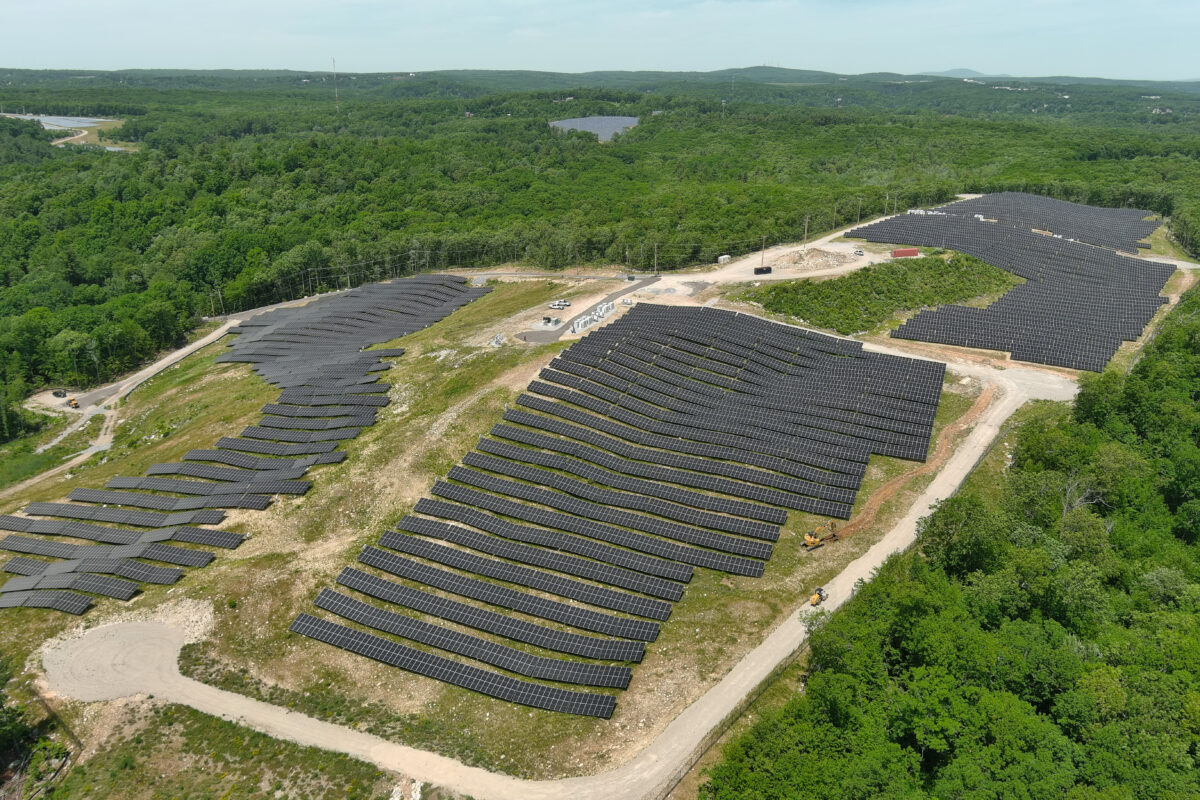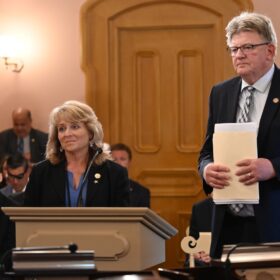In 2024, energy storage became one of the most dynamic and consequential forces shaping the U.S. energy transition. According to a 2025 Cleanview report, the country installed a record-breaking 48.2 gigawatts (GW) of utility-scale solar, wind and battery storage capacity—a 47% increase over the previous year. Energy storage alone saw a 76% year-over-year increase in deployments according to BloombergNEF, positioning it as a critical tool for load balancing and grid resilience.
This growth was propelled not only by federal incentives and state-level mandates, but also by improved project economics, greater confidence in bankability and evolving market structures that support new revenue models.
Yet just as energy storage begins to scale meaningfully, the U.S. electric grid faces an entirely new challenge: unprecedented demand. The rapid rise of energy-hungry artificial intelligence, combined with the electrification of everything, is fueling an exponential increase in electricity consumption. An April 2025 report from the International Energy Agency projects that in the U.S., power consumption by AI data centers is on course to account for almost half of the growth in electricity demand between now and 2030. More broadly, U.S. national load growth is expected to increase by 456% over five years, per a GridStrategies analysis, and the U.S. Energy Information Administration projects a 2% annual increase in electricity demand through 2026.
In light of this, the Trump administration has taken a markedly different approach from its predecessor—pursuing a more diversified energy policy that includes expanding domestic fossil fuel development to strengthen short-term energy security. But, while this may address reliability in the near term, it risks sidelining long-term goals around sustainable energy independence and climate resilience.
To strengthen grid stability and affordability while meeting escalating demand, the U.S. will need an ‘all-of-the-above’ approach—one where energy storage plays a foundational role. The opportunity is clear: with the right policy reforms, revenue mechanisms and investment frameworks, energy storage can deliver near-term reliability, long-term resilience and economic returns.
Stability: enhancing grid reliability and beyond
As electricity demand rises and renewable energy adoption accelerates, energy storage is proving to be a crucial stabilizing force. Battery systems act as a flexible buffer against volatility, enabling grid operators to manage peak loads more effectively and avoid overburdening traditional generation assets. By displacing high-emission peaker plants during periods of high demand, such as late afternoons, cold snaps, or heat waves, storage helps maintain system stability while reducing emissions.
Just as importantly, batteries help solve one of the biggest challenges of renewable energy: intermittency. As wind and solar become more prevalent, storage systems ensure a steady power supply, even when the sun isn’t shining or the wind isn’t blowing. In emergency situations, such as extreme weather events or transmission failures, battery systems can provide backup power, offering a vital layer of resilience when it’s needed most.
Speed of deployment is another advantage. Unlike transmission upgrades or new power plants, which often require years of permitting, review and construction, battery storage projects can be installed and brought online in a matter of months. That makes them an agile solution for addressing immediate grid needs while longer-term infrastructure investments take shape.
Affordability: driving down costs and boosting U.S. competitiveness
Beyond reliability, storage is playing an increasingly important role in making electricity more affordable. Through energy arbitrage—charging batteries when electricity prices are low and discharging them when prices are high—storage helps stabilize wholesale power markets. This leads to more predictable energy costs and reduces ratepayer exposure to price spikes at the residential and business levels.
A clear example of these benefits in action comes from Rhode Island, where Pascoag Utility District partnered with Agilitas Energy to deploy the state’s first utility-scale battery storage system. Designed to enhance both reliability and affordability, the project allows the utility to store energy when generation is high and prices are low, then discharge it during peak demand periods. This approach results in lower peak demand, which is the basis on which regional capacity and transmission network expenses are allocated. With proper dispatch strategies and strong battery performance, the utility lowers costs for their retail customers, all while improving grid stability. The success of the Pascoag project demonstrates how targeted energy storage investments can deliver real-world value at the community level, supporting both economic efficiency and energy resilience.
Affordability gains will also come from improved project financing, streamlined permitting, contract standardization and the ability to tap into multiple value streams. Revenue stacking—compensating batteries for more than just energy arbitrage—is becoming central to bankability.
Independence: using domestically generated power—better
Storage also contributes to energy independence. By enabling more efficient use of domestically generated power, particularly from renewable sources, the U.S. can reduce reliance on imported fuels and shield itself from global supply chain disruptions. And as the sector expands, it’s also fueling job growth. The storage industry spans a wide range of roles, including manufacturing, installation, software development and systems engineering. According to the U.S. Energy and Employment report (USEER), the transmission, distribution, and storage (TDS) segment employed more than 1.4 million people in 2023, a 3.8% year-over-year increase that outpaced broader energy sector growth. As deployment continues to scale, so will storage’s impact on the U.S. workforce.
Why energy storage must be treated as critical infrastructure in the U.S. energy strategy
Now that it’s clear that energy storage is a true pillar of U.S. energy independence, policymakers must treat it as critical infrastructure, on par with traditional generation and transmission. But how? That starts with accelerating permitting and interconnection timelines, allowing storage to be deployed at the speed demand now requires. Market structures must evolve to compensate batteries not just for power, but for the unique services they offer—like fast ramping, peak load reduction and frequency support.
Long-duration storage, essential for a decarbonized grid, needs targeted incentives to encourage deployment beyond two-hour systems. And to unlock financing, the industry needs policy tools that support contract standardization and mitigate merchant revenue risk. With these reforms, energy storage can scale to meet the moment: strengthening the grid, lowering costs and securing America’s energy future. These steps are not optional—they are prerequisites for scaling storage fast enough to meet the moment. With the right market alignment and policy support, storage can strengthen the grid, lower costs and improve long-term energy security.
Energy independence can’t be achieved by doubling down on fossil fuels or relying solely on intermittent renewables. It demands a comprehensive, forward-looking strategy—one that recognizes storage as a central enabler of speed, resilience, flexibility and affordability. The momentum is already here. Now it’s time to match it with bold, coordinated policy to ensure energy storage plays the role the grid urgently needs it to.

Rick Labrecque is vice president of interconnection & utility affairs at Agilitas Energy, a Massachusetts-based developer, builder, owner and operator of distributed energy storage and solar PV systems.
The views and opinions expressed in this article are the author’s own, and do not necessarily reflect those held by pv magazine.
This content is protected by copyright and may not be reused. If you want to cooperate with us and would like to reuse some of our content, please contact: editors@pv-magazine.com.








By submitting this form you agree to pv magazine using your data for the purposes of publishing your comment.
Your personal data will only be disclosed or otherwise transmitted to third parties for the purposes of spam filtering or if this is necessary for technical maintenance of the website. Any other transfer to third parties will not take place unless this is justified on the basis of applicable data protection regulations or if pv magazine is legally obliged to do so.
You may revoke this consent at any time with effect for the future, in which case your personal data will be deleted immediately. Otherwise, your data will be deleted if pv magazine has processed your request or the purpose of data storage is fulfilled.
Further information on data privacy can be found in our Data Protection Policy.